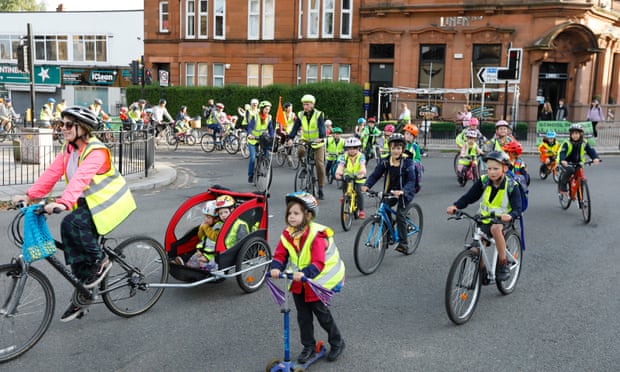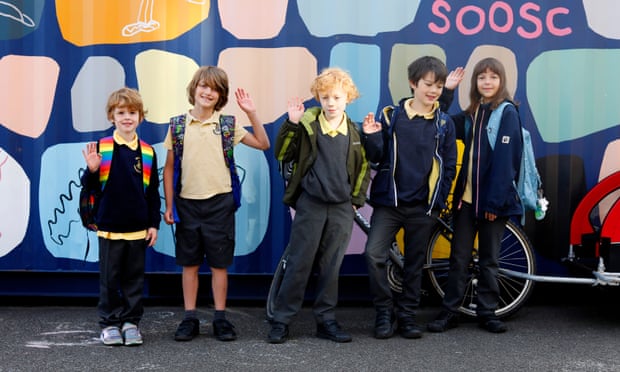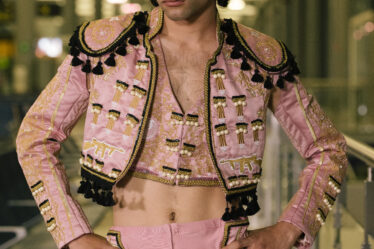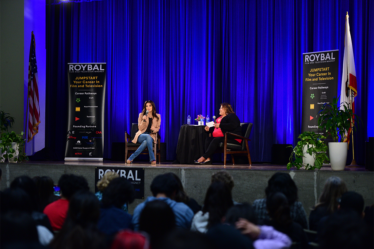
With a jingle of bells and a blur of hi-vis jackets, the colourful convoy of children and parents crosses a busy junction on Glasgow’s southside on their way to primary school.
It’s Friday morning, and the weekly Shawlands bike bus is using a new wireless remote control to pause the peak morning traffic at Shawlands Cross for long enough to allow the 50 or so cyclists to navigate the junction together in safety.
Developed by Glasgow city council’s traffic management service, the “ultra-smart cycle system”, mounted on the lead rider’s bike, uses a military grade encrypted signal that sets a specially timed traffic light cycle in motion, initiating a longer than usual 45-second pause to allow the slower-moving youngsters to turn right at the junction on their way to school.
The smart technology, believed to be the first of its kind in the UK, operates only on Friday mornings between 8.30am and 9am, when the bike bus escorts children from the local area along a prescribed route finishing at Shawlands primary school, in time for the start of the school day.
Waiting for the bell in the playground, nine-year-old Beatrix says she likes to take the bike bus because it means she can chat to her friends on the way to school. Laurie, also nine, likes ringing his bell at the people who wave when he cycles past. Eight-year-old Leo says simply: “It’s a bit of freedom in your life.”
For Owen, five, the best thing about the bike bus is being able to cycle his new red and orange bike on the road, when normally his biking is confined to parks and tracks. He learned to pedal when he was three, he explains.
Giving children and parents permission to take up space amid the car traffic is one of the key aspects of the bike bus, says Owen’s father and a co-organiser, Gareth Johnson, who first suggested the idea to a group of neighbours last October after reading about a similar project in Barcelona.

“It’s nice for parents to realise they can take up space and use the road safely, and to see their kids growing in confidence. It’s an injection of joy in the morning, and people are calling it their weekly dose of community,” he says.
“We started off with five families,” Johnson explains, “and the first time was the day of the Halloween party at primary school. The kids loved it, cycling along in their costumes.”
More families have joined since then, but with increased numbers the bike bus has encountered a few dangerous incidents of drivers frustrated at the time taken for them to cross the busy junction, moving too close to the children and using their horns. Organisers are hopeful that the new traffic-stopping technology will put an end to this.
“It’s a tricky junction, so this helps us to keep together and lets other road users see we need to be turning right,” says Beatrix’s mum, Polly Le Grand. “It’s good for them to feel they have as much right to be on the road as cars. They’re getting extra confidence that then makes cycling a more practical way to get around the rest of the time. It helps that they’re treated a bit like celebrities, which the kids love!”
The Shawlands bike bus is already advising six other schools in Glasgow that are interested in piloting their own versions, with similar schemes in Edinburgh and elsewhere across the UK.
One parent looks around the playground as the children disappear rosy-cheeked into the building for the start of the school day. “We’re going to need a bigger bike shed.”



